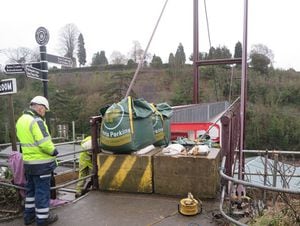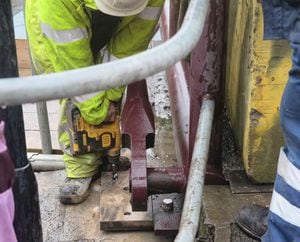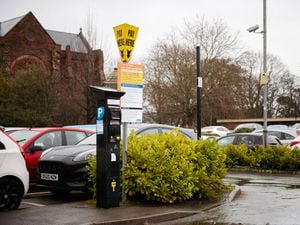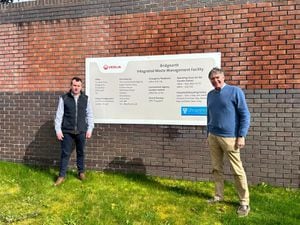Work to repair Severn Valley Railway bridge in Bridgnorth begins
Work to attempt to secure the end of a footbridge which connects Bridgnorth to the Severn Valley Railway has been taking place.

The bridge was closed to pedestrians on January 6, after staff from the SVR station notified police that the end of the footbridge, on the station side, "had lifted up significantly and appeared to be hanging dangerously in mid-air".
Last week, Shropshire Council discovered the problem was "a lot worse than first envisaged" after it was discovered eight bolts holding down the walkway have completely failed.
Council engineers carried out an investigation to discover the cause of the problem, believed to be the effects of cold weather and the long-term wear of people using it.
Council workmen are now using weights to hold down the bridge, while new fixings are installed. This initial work - which started on Monday - will be a temporary repair, intended to be completed before February 19.
The bridge will then remain open throughout the summer before contractors return for permanent repairs in late October or early November.

Previously, Gurnek Sigh, Shropshire Council's interim bridges and structures manager, said the problem had been hidden for many years, despite inspections because of the design of the bridge.
He said: "The holding down bolt anchorages to the west end bearing supports have completely failed. The exact cause of failure is still largely unknown, and engineers have been looking at as-built records and will be undertaking further analysis work, modelling and calculations to try to determine the cause of the failure.
“The eight holding down bolts fix the deck walkway in position and prevent it from moving excessively under live pedestrian loading.
"However, engineers looking at the mode of failure believe the bolt failure has been caused by a combination of slat laden de-icing salts, which have penetrated onto the tops of the bank supports and ‘eaten’ away at the high tensile steel bolts; cyclic fatigue failure due to pedestrian live loading; and contraction of the main cables and lattice steelwork caused by the recent prolonged cold temperatures.
"Engineers also suspect the problem has been ongoing for a number of years, but has remained hidden from view during routine bridge inspections due to the design detailing.”





